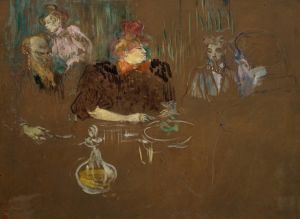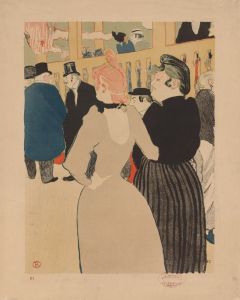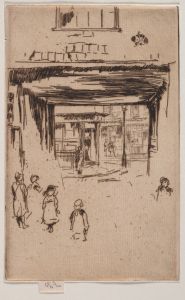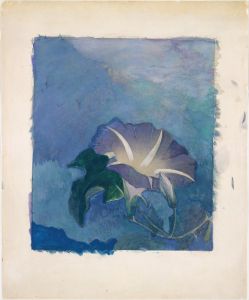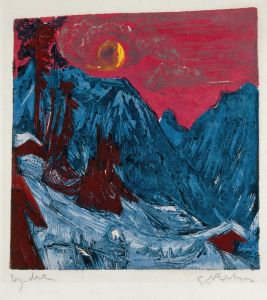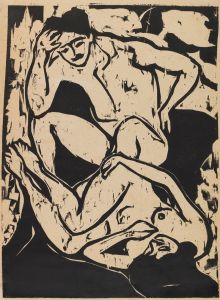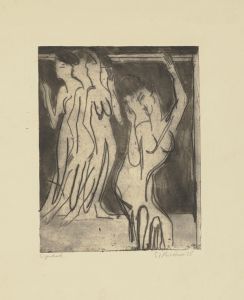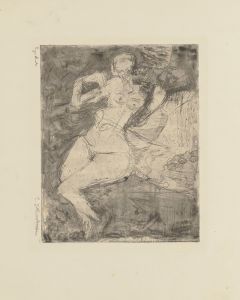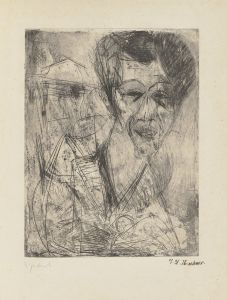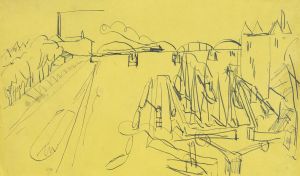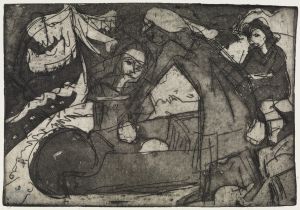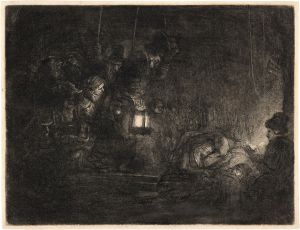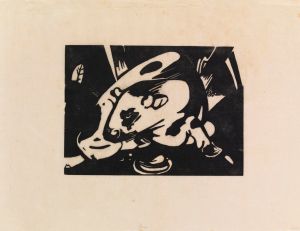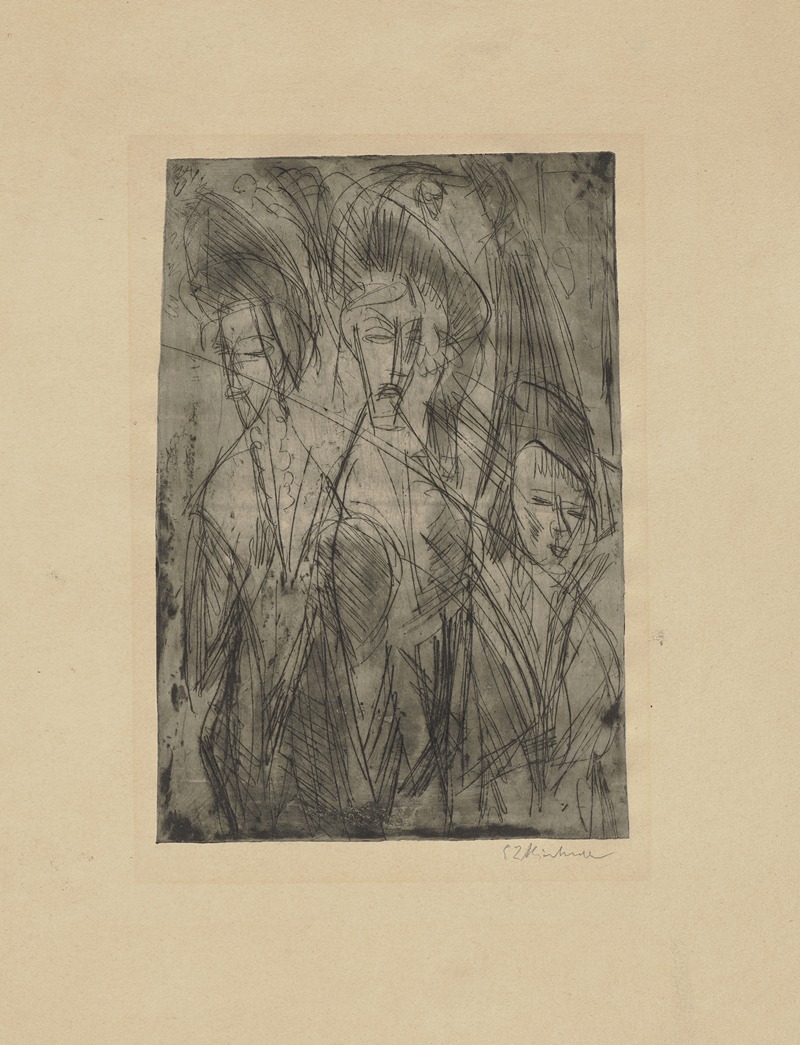
Drei Kokotten bei Nacht
A hand-painted replica of Ernst Ludwig Kirchner’s masterpiece Drei Kokotten bei Nacht, meticulously crafted by professional artists to capture the true essence of the original. Each piece is created with museum-quality canvas and rare mineral pigments, carefully painted by experienced artists with delicate brushstrokes and rich, layered colors to perfectly recreate the texture of the original artwork. Unlike machine-printed reproductions, this hand-painted version brings the painting to life, infused with the artist’s emotions and skill in every stroke. Whether for personal collection or home decoration, it instantly elevates the artistic atmosphere of any space.
Ernst Ludwig Kirchner was a prominent German expressionist painter and one of the founding members of the artist group Die Brücke, which played a pivotal role in the development of modern art in the early 20th century. His work is characterized by bold colors, dynamic compositions, and a focus on urban life and human figures. One of his notable works is "Drei Kokotten bei Nacht" (Three Prostitutes at Night), which exemplifies his unique style and thematic interests.
"Drei Kokotten bei Nacht" was created during a period when Kirchner was deeply engaged with the vibrant and sometimes tumultuous life of Berlin. The painting reflects the artist's fascination with the city's nightlife and its inhabitants, particularly those on the fringes of society. This work is a vivid portrayal of three women, presumably prostitutes, depicted in a nocturnal urban setting. Kirchner's use of color and form in this painting is typical of his expressionist approach, where emotional experience is prioritized over realistic representation.
The composition of "Drei Kokotten bei Nacht" is striking, with the figures rendered in exaggerated, elongated forms that convey a sense of movement and tension. The use of sharp lines and contrasting colors creates a dynamic interplay between the figures and their environment. Kirchner's palette in this painting is bold and vibrant, with deep blues, reds, and yellows that evoke the artificial lighting of the city at night. This choice of color not only enhances the dramatic effect of the scene but also reflects the influence of Fauvism, which Kirchner admired.
Kirchner's depiction of the women in "Drei Kokotten bei Nacht" is both empathetic and critical. While he captures their allure and the seductive nature of their profession, he also hints at the underlying vulnerability and isolation of their lives. This duality is a recurring theme in Kirchner's work, where he often explores the complexities of modern urban existence and the psychological impact of city life on individuals.
The painting is also significant for its reflection of the social and cultural changes occurring in Germany during the early 20th century. The presence of prostitutes in Kirchner's work can be seen as a commentary on the shifting morals and the increasing visibility of marginalized groups in urban centers. It highlights the intersection of art and society, where artists like Kirchner sought to capture the essence of their times through their work.
"Drei Kokotten bei Nacht" is housed in a private collection, and like many of Kirchner's works, it continues to be studied and appreciated for its artistic and historical significance. Kirchner's contribution to the expressionist movement and his exploration of modern life have left a lasting impact on the art world, influencing generations of artists who followed.
In summary, "Drei Kokotten bei Nacht" is a quintessential example of Ernst Ludwig Kirchner's expressionist style and his engagement with the themes of urban life and human emotion. Through his bold use of color, dynamic composition, and empathetic portrayal of his subjects, Kirchner captures the complexity and vibrancy of early 20th-century Berlin, making this painting a significant piece in the history of modern art.





